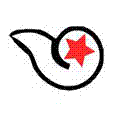Juan Chavez Alonso, Purepecha indigenous leader, dies
A tireless community fighter who has supported the Zapatistas since 1994
In 2001, during the March of the Colour of the Earth, he was one of the main speakers, alongside the General Command of the Zapatista Army of National Liberation in the Congress of Union
Gloria Muñoz Ramírez
Special for La Jornada
Sunday June 3, 2012,
Morelia, Michoacan, June 2.
Zapatista from 1994 until the last day of his life, community activist, leading light in the national indigenous movement, recuperator of land and historical memory, promoter of indigenous education, migrant worker in the United States on several occasions, farmer, musician and composer, unwritten poet, man of the land, Don Juan Chávez Alonso died on Saturday following an accident at home while building a barn.
Originally from the community of Nurio, gateway to the Purépecha meseta, firm and incorruptible, although governments and organizations wanted to make him their own, Don Juan remained loyal to his convictions and the principles of the Zapatista struggle ever since 1994, when he attended the National Democratic Convention (CND) convened by the Zapatista Army of National Liberation (EZLN).
After the CND, he participated in the dialogue of San Andrés Sacamch’én de los Pobres, at the first table of dialogue about indigenous rights and culture between the EZLN and the federal government, from April 1995 until February 1996. During this period Don Juan’s moral authority shone out, and he immediately won the respect of the entire team of advisers, both indigenous representatives from around the country, and intellectuals and other guests at proceedings which were unprecedented in the world. He was later instrumental in the founding the National Indigenous Congress (CNI) in October 1996, along with Comandanta Ramona.
Autonomy “without anyone’s permission”
Following the failure of the entire political class [to ratify] the accords, Don Juan accompanied all the initiatives aimed at achieving agreement, such as the march of 1,111 Zapatistas to Mexico City, the National Consultation on the Rights of the Indian People, the March of the Colour of the Earth and, finally, the putting into practice of autonomy without anyone’s permission, when the Zapatistas organized their territory into five caracoles, in an initiative that had an echo in Nurio, Juan’s village, a community which had been emblematic of the indigenous movement since it hosted the Third CNI, in which the General Command of the EZLN and representatives of more than 40 indigenous communities in the country participated.
In 2001, during the March of the Colour of the Earth, Don Juan was one of the main speakers, next to the General Command of the EZLN, in the Congress of the Union.
As part of the Other Campaign, which was launched in January 2006, Don Juan welcomed Subcomandante Marcos to Michoacan, and toured the north of the country with him. He later took part in the camp that was held in the community of El Mayor, with the Cucapá people, and in the Continental Indigenous Encounter at Vicam, Sonora.
Before the Zapatista uprising, he participated, between 1987 and 1988,
in the National Democratic Front, and encouraged the Indigenous Movement of the Purépecha Nation, which would later divert from the path of autonomy and link with the state government; this is why Don Juan left them and continued his work with the CNI, a network of people, tribes, nations and neighbourhoods of the Indians of Mexico.
An ardent promoter of the safeguarding of Purépecha wisdom, he dreamed and planned to build an indigenous university, very different from those built in Michoacan and other parts of the country.
Don Juan, at the age of 71, was not new to struggle. It was not only his skin that was tough, because since 1970, as an authority of his people, he led the reclamation of the land which the smallholders from Paracho had snatched from their community. Later, in the early 80s, he was arrested by the state authorities, for his struggle in defence of the land, accused of arming his community.
Don Juan brought to his community the 69 Technical High School, the first to be built in a Purépecha community, thanks to the struggle and mobilization of more than 100 communities in the area. He was also promoter of a hostel, an auditorium and a large farm surrounded by pine trees that was planned in 1981 “to organize activities to rescue Purépecha tradition and history, through means such as courses and seminars in traditional medicine and organic farming”, explained Don Juan.
The Purépecha activist also travelled the world spreading the demands of indigenous peoples. In 2002 he visited the office of UN High Commissioner for Human Rights in Geneva, and years later his word travelled through the rural towns of France and various social spaces in Greece and Spain.
Always with his trademark hat, jacket and overcoat, Don Juan was seen only last December and January at the seminar Planet Earth: anti-systemic movements, in San Cristobal de Las Casas, in the context of the 18th anniversary of the uprising of the EZLN.
There Don Juan Chavez apologized for not answering the question raised about the influence of the EZLN in the emerging anti-systemic movements. “I apologize, for I am not the person best qualified to talk about these issues. That is why this event was organized, so those who are organizing the new resistances can share with us their experience. For our part we’ve been busy enough, working in the fields, because we still believe that the struggle continues through sowing the land.”
The national and international community has already sent messages of solidarity with the family, and with the indigenous movement, which has lost one of its pillars. His body will be buried in his native Nurio, with his people. He is survived by his wife Celia Romero, his mother Francisca Alonso, his seven children and his grandchildren.



1 Comment
No comments yet.
Sorry, the comment form is closed at this time.
RSS feed for comments on this post.